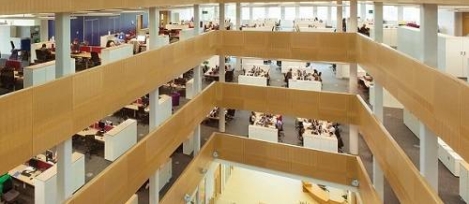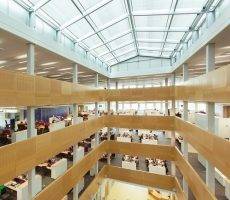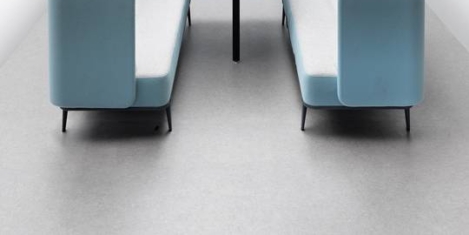September 8, 2016
What do Millennials and Gen Z want from work? The same as everybody else 0
 More evidence that younger people are in fact people after all emerges with the publication of a new report from Randstad and Future Workplace. The study of over 4,000 individuals worldwide claims that despite widespread belief, 41 percent of Generation Z employees believe that collaborative, corporate offices combined with a degree of autonomy and flexibility is their preferred way to work. They prefer bosses with strong communication skills, value face to face meetings, are irritated by distractions and believe they will probably have a career focussed oln one specific sector. As a follow-up to a previous study conducted in 2014, the Gen Z & Millennials Collide@Work report focuses on the impact of Gen Z entering the workplace for the first time and how Millennials are engaging with them. Both studies claim that Gen Z and Millennials continue to prefer communicating with co-workers and managers in-person in lieu of email and phone.
More evidence that younger people are in fact people after all emerges with the publication of a new report from Randstad and Future Workplace. The study of over 4,000 individuals worldwide claims that despite widespread belief, 41 percent of Generation Z employees believe that collaborative, corporate offices combined with a degree of autonomy and flexibility is their preferred way to work. They prefer bosses with strong communication skills, value face to face meetings, are irritated by distractions and believe they will probably have a career focussed oln one specific sector. As a follow-up to a previous study conducted in 2014, the Gen Z & Millennials Collide@Work report focuses on the impact of Gen Z entering the workplace for the first time and how Millennials are engaging with them. Both studies claim that Gen Z and Millennials continue to prefer communicating with co-workers and managers in-person in lieu of email and phone.












 A ‘stiff upper lip’ attitude towards wellness by UK bosses needs to change in order to advance employee wellbeing, argues a survey by Bupa. It is business leaders who are the key to overcoming the challenges facing employees’ health and wellbeing, it claims. The vast majority (94 percent) of those questioned believe there will be significant change in the employer-employee relationship in the next ten years. 91 percent of business leaders agree that technology will continue to impact the wellbeing of their workforce over the next decade and 71 percent agree the standard 9am-5pm working day is a thing of the past. Seven in ten (68 percent) noted a ‘stiff upper lip attitude’ at executive level, creating barriers to conversations about wellbeing, and three fifths (62 percent) of leaders think they need to show that they don’t suffer from ill health.
A ‘stiff upper lip’ attitude towards wellness by UK bosses needs to change in order to advance employee wellbeing, argues a survey by Bupa. It is business leaders who are the key to overcoming the challenges facing employees’ health and wellbeing, it claims. The vast majority (94 percent) of those questioned believe there will be significant change in the employer-employee relationship in the next ten years. 91 percent of business leaders agree that technology will continue to impact the wellbeing of their workforce over the next decade and 71 percent agree the standard 9am-5pm working day is a thing of the past. Seven in ten (68 percent) noted a ‘stiff upper lip attitude’ at executive level, creating barriers to conversations about wellbeing, and three fifths (62 percent) of leaders think they need to show that they don’t suffer from ill health.




 A skim through workplace features in the media and you’d be forgiven for thinking that the traditional office is no longer with us. According to the narrative, we’re all now 20-somethings, working in open-plan warehouses, with table football, bean bags and comfy sofas to lounge on, while drinking our custom-made soya lattes. When in actual fact, while more relaxed, fun and funky offices tend to make the headlines, the majority of people still work in a relatively traditional way, with their PC or laptop, a desk and an ergonomic task chair. What’s more, with an ageing workforce, we certainly aren’t all 20-somethings, with DWP (Department of Work and Pensions) figures revealing that the employment rate for people aged 50 to 64 has risen by 14 per cent in the last 30 years, and doubled for over 65s. So designing with just the youngsters in mind simply doesn’t add up. Recent research by the Senator Group, backs up this view.
A skim through workplace features in the media and you’d be forgiven for thinking that the traditional office is no longer with us. According to the narrative, we’re all now 20-somethings, working in open-plan warehouses, with table football, bean bags and comfy sofas to lounge on, while drinking our custom-made soya lattes. When in actual fact, while more relaxed, fun and funky offices tend to make the headlines, the majority of people still work in a relatively traditional way, with their PC or laptop, a desk and an ergonomic task chair. What’s more, with an ageing workforce, we certainly aren’t all 20-somethings, with DWP (Department of Work and Pensions) figures revealing that the employment rate for people aged 50 to 64 has risen by 14 per cent in the last 30 years, and doubled for over 65s. So designing with just the youngsters in mind simply doesn’t add up. Recent research by the Senator Group, backs up this view.
 Much has already been written about the UK’s digital skills gap, and undoubtedly as the Government continues to develop and roll out its Digital Strategy for the nation, many more headlines will be devoted to it. For a country so focused on technological development it’s a problem which is both acute and imperative. Recent Government figures put 12.6 million Britons at risk of being left behind in terms of the skills needed for a modern economy. Parliamentary plans to address this issue focus firmly on education: including digital development as a key part of apprenticeships, encouraging vocational digital skills courses at universities, and broadening access to other educational courses to help people to learn to code. However, responsibility to upskill the nation’s workforce also resides with employers. Whether the current role demands IT skills or not, technology increasingly impacts and transforms every element of our lives.
Much has already been written about the UK’s digital skills gap, and undoubtedly as the Government continues to develop and roll out its Digital Strategy for the nation, many more headlines will be devoted to it. For a country so focused on technological development it’s a problem which is both acute and imperative. Recent Government figures put 12.6 million Britons at risk of being left behind in terms of the skills needed for a modern economy. Parliamentary plans to address this issue focus firmly on education: including digital development as a key part of apprenticeships, encouraging vocational digital skills courses at universities, and broadening access to other educational courses to help people to learn to code. However, responsibility to upskill the nation’s workforce also resides with employers. Whether the current role demands IT skills or not, technology increasingly impacts and transforms every element of our lives.
 Badly run and overrunning meetings remain amongst the main sources of workplace conflict and unhappiness, according to a study of 1,000 US employees from workplace software provider
Badly run and overrunning meetings remain amongst the main sources of workplace conflict and unhappiness, according to a study of 1,000 US employees from workplace software provider 









September 3, 2016
Electrosensitivity and the question of whether WiFi may be making us ill 0
by Mike James • Comment, Technology, Wellbeing
More →